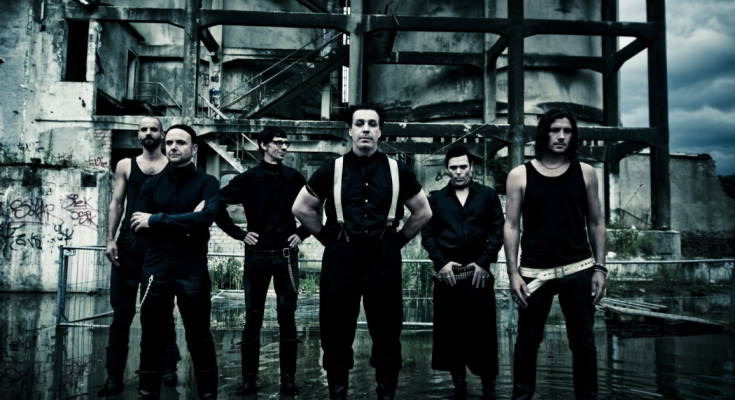The documentary begins with a declaration from the band: this tour was their grand finale, a journey spanning five years, 135 concerts, and six million fans in attendance. ) Over those years, a video team shadowed the entire show ecosystem, not just to capture spectacle but to shine light on the often invisible work of stage crews, riggers, pyrotechnicians, lighting and sound engineers, logistics teams, hospitality staff, and myriad others whose contributions are frequently overlooked
From the opening scenes, the documentary establishes its tone. Sweeping aerial and backstage visuals show enormous trucks, deconstructed trusses, scaffolding, cable coils, control rooms, and backstage corridors lined with cases of gear, interspersed with quick cuts of hands tightening bolts, technicians testing lights, calibrating sound, and managing flame rigs. The film does not indulge in dramatic confessions or flashy onscreen interviews; instead, it lets the work speak for itself. In one sequence, a lighting engineer peers through a control console, toggling settings in real time, while in another the pyrotechnics crew rehearses flame bursts, coordinating the timing of each jet. The synchronization of visual, audio, and safety systems emerges as an intricate dance of precision.
One of the strongest throughlines is the documentary’s insistence that scale is only half the challenge; consistency across dozens of venues, countries, and cultures is what ultimately tests these teams. Each new stadium presents its own constraints: dimensions, sightlines, load-in access, local safety and permitting codes, electrical infrastructure. The film tracks how the production team adapts their modular systems for each site, how they stage-rehearse under shifting weather and time constraints, and how crews move with clockwork efficiency between cities to stay on schedule. A cargo plane lands, trucks roll in, cranes hoist sections of the stage, cables are stretched overhead. All this in a tight window, so that the band’s set-up runs like clockwork. uently cuts to crew members huddled under shade, joking, checking gear, sleeping in vans, eating hastily between shifts, and often working long past midnight. They speak (off camera or in voice-over) about the strain of travel, the pressure of never missing a deadline, and the camaraderie that forms among those who build something massive together. What becomes clear is that the visual extravagance of a Rammstein concert—fire jets, collapsing towers, flying platforms—is only possible because of countless unseen decisions, rehearsals, safety checks, repairs, and redundancies. (NME)
As the documentary proceeds, we see glimpses of the band entering the frame: a silhouetted figure moving through backstage corridors, an aerial shot of Till Lindemann walking past scaffolding at dusk. Their presence is minimal; rather, these moments underscore that this is not a vanity project. The spotlight, behind all its dazzle, is being redirected to those who make the dazzle possible. One quote encapsulates the ethos: the film highlights “the expertise, tireless dedication, close collaboration, and sense of responsibility of an exceptional crew — qualities essential to creating a show of this magnitude.
The documentary also delves into the more logistical, less glamorous side of touring: hospitality, transportation, scheduling, and communication. Scenes show catering staff preparing meals for a hundred crew members, buses navigating unfamiliar cities, managers in back rooms balancing last-minute changes, and walkie-talkie chatter coordinating everything from load-ins to trivial on-the-fly fixes. It’s not just about setting up flaming towers; it’s about keeping everyone alive, fed, rested, and on time. One sequence illustrates the kind of split-second decisions made when weather threatens show safety; another reflects how delays or local constraints force real-time modifications.
Though the film does not shy away from showing tension and risk, it leans toward respect rather than drama. A few crew members briefly admit exhaustion; elsewhere a tearful technical rehearsal reveals how much is on the line. But the overall narrative is one of pride. As fans watching from afar, viewers are asked to rethink the nature of spectacle—not as magic born from one band but as a composite achievement of many hands, each doing its part to keep the illusion alive.
The documentary’s release was accompanied by a message from Rammstein themselves. They framed it as a final curtain for that stretch of their touring life, and as gratitude to “everyone who played a part in bringing this tour to life.” (Theprp.com) They thanked their families, crew, management, and supporters, acknowledging that a production of this magnitude is not a solo act.
In media coverage of the release, critics noted how rare it is for a band to devote an hour to celebrating technical staff rather than celebratory self-mythologizing. NME said the film “unveils how Rammstein’s tour crew created the stage every night” and that “aside from a few shots, the band are rarely featured.” (NME) Exclaim remarked on how the video “explores the band’s journey across 135 shows … a massive stage was constructed for each show … highlights the tireless dedication of the tour’s crew.” (exclaim.ca) The PRP described it as “nearly hour-long behind the scenes documentary highlighting their world stadium tour … jaw-dropping displays of pyrotechnics and elaborate stage production. Blabbermouth underscored the numbers: 135 concerts, six million fans, and the band’s intent to show the full scope of their operation.
One notable tension underlying the documentary is what is left unsaid. The tour spanned a turbulent period: it began in 2019, was disrupted by the COVID-19 pandemic, and resumed in subsequent years under changing landscapes of health restrictions, travel rules, and audience expectations. The film hints at these challenges—venues canceled, routing changed, schedules compressed—though it does not dwell on them. Instead, its focus remains on continuity: making every show work. The implication is that the true wonder isn’t just in planning grandeur during calm, but in adapting through crisis.
Rammstein’s own touring history helps contextualize the documentary. Their Stadium Tour (2019–24) is often considered their most ambitious to date: according to public records, it encompassed over 140 shows, grossed over half a billion dollars, and became the most financially successful tour in their career. (Wikipedia) Delays and cancellations during the pandemic forced them to carry the tour across calendar years, making the span longer and more complex than typical tours. The film’s period of coverage implicitly acknowledges these years of pause, rebuild, and resilience.
For fans, the documentary has sparked emotional reactions and insider discussion. On Reddit, one user described it as “mind blowing what it takes and how they manage to pull it off. … the actual music is sparsely used and quite understated so you don’t have to be a fan to enjoy this.” (Reddit) Others noted how the band giving public recognition to their crew is almost unprecedented, and praised the humility implicit in dedicating so much screen time to those behind the curtain. (Reddit) Some speculated the same footage might later appear in streaming service versions or Blu-ray releases, beyond its debut on YouTube. (Reddit)
From a storytelling standpoint, the documentary succeeds by resisting excess and dramatic flourish. It seldom indulges in sentimental voice-over or manufactured climaxes. Its pacing is measured: interludes of structural assembly, cross‑cut with short procedural moments, toward a cumulative effect. The absence of heavy narration invites viewers to draw their own sense of scale and wonder. When a flame tower erupts mid‑concert, we’ve already grasped how many layers of preparation made it possible, which gives the spectacle more weight.
In the final minutes, the documentary shifts tone to quiet reflection. Footage shows crews breaking down stages for the last time, trucks driving away under setting sun, and a final shot of an empty stadium. Band members deliver brief acknowledgments, but these are woven into the larger visual of closure. The sense is that one chapter ends—not with fanfare, but with a quiet moment of respect and gratitude.
Rammstein — Behind the Scenes of the World Stadium Tour 2019‑2024 is more than a promo for a tour: it is a document of labor, of collective artistry, and of how modern spectacle is built not by star alone, but by legions. It reminds us that behind every soaring jet flame and synchronized light burst lies a thousand small decisions, adjustments, and maintaining of standards. In doing so, it elevates the unsung heroes of live music production, asking viewers to see not just the explosion on stage but the chain reactions that made that explosion possible.



